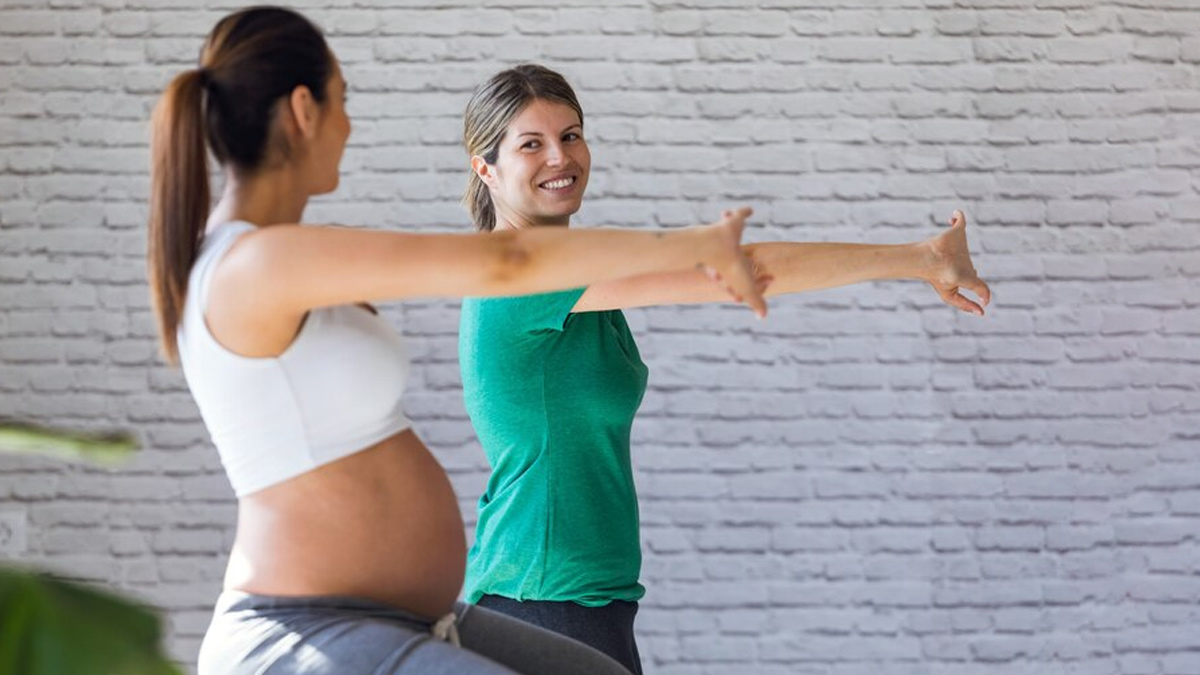
Pregnancy is a beautiful journey, but it often comes with its own set of challenges, one of the most common being lower back pain. This discomfort can start as early as the first trimester and may intensify as the pregnancy progresses. But with the right guidance, this can be managed effectively.
Table of Content:-
In an interaction with the OnlyMyHealth team, Kavita Singh, Physiotherapist and Lactation Expert, Cloudnine Group of Hospitals, New Delhi, explained to us why back pain occurs during pregnancy and how physiotherapy can help manage it.
Why Does Back Pain Occur in Pregnancy?
1. Weight Gain: During pregnancy, a healthy weight gain typically ranges between 9 to 15 kilograms. This additional weight, as per Kavita Singh, puts extra strain on the spine, leading to lower back pain. The growing uterus also puts pressure on blood vessels and nerves in the pelvis, adding to the discomfort.
2. Postural Changes: Singh said, “As the baby grows, a woman’s centre of gravity shifts forward, causing her to stand with her weight leaning forward, often leading to an exaggerated curve in the lower back.” This change, known as lumbar lordosis, can put additional stress on the back muscles.

3. Hormonal Changes: According to Singh, pregnancy triggers the release of the hormone relaxin, which helps relax the ligaments in the pelvic area in preparation for delivery. Unfortunately, this hormone also loosens the ligaments that support the spine, leading to instability and back pain.
4. Separation of Abdominal Muscles: As the uterus expands, the rectus abdominis muscles, which run from the rib cage to the pubic bone, can separate along the centre, contributing to back pain.
5. Stress: Emotional stress can cause muscle tension, leading to spasms and backache. “Pregnancy can be an overwhelming time, and managing stress is crucial in reducing physical discomfort,” Singh said.
Also read: Common Reasons Why You May Have Dry Mouth During Pregnancy
Tips to Prevent Back Pain During Pregnancy

1. Maintain Good Posture: “Maintaining good posture is the best prevention,” says Singh. Stand up straight with a neutral spine, shoulders relaxed and back, and avoid leaning forward. Distribute your weight evenly on both legs, and if you need to stand for long periods, rest one foot on a low stool and switch frequently.
2. Proper Sitting Posture: Choose a chair that supports your back or use a small pillow for lumbar support. Sit up straight and take frequent breaks if you have a long sitting job. Move away from your desk regularly and take short walks to keep your muscles relaxed.
3. Wear Supportive Footwear: Opt for low-heeled shoes with good arch support. Avoid completely flat shoes as they can worsen back pain by not providing adequate support to your changing posture.
Physiotherapy Exercises to Relieve Back Pain

Always consult your obstetrician before starting any exercise during pregnancy. Here are some exercises recommended by Kavita Singh:
1. Cat and Camel Exercise
- Position yourself on all fours with shoulders over hands and hips over knees.
- Exhale, contract your abdominal muscles, push your spine up towards the ceiling, and tuck your chin to your chest.
- Hold for 10-15 seconds, then return to the starting position. Repeat 10 times.
2. Bridging
- Lie on your back, bend your knees, and keep your back flat on the floor.
- Inhale, lift your hips up, hold for 5-10 seconds, then exhale and lower your hips back down.
- Repeat 10 times to strengthen back muscles.
3. Deep Abdominal Breathing
- Sit or lie down comfortably. Place your hands on your belly, inhale and move your belly button out, then exhale while drawing your belly button towards the spine.
- Perform 5-8 reps, ensuring relaxed breathing without excessive pressure on the abdomen.
4. Lion Stretch
- Start on all fours, widen the distance between your knees, and sit back towards your heels.
- Drop your head and chest, holding the position for 10 seconds.
- Perform at least 5 repetitions for a gentle stretch of the back, pelvis, and thighs.
5. Superwoman Exercise
- On all fours, keep your spine straight.
- Slowly raise your right arm and left leg parallel to the ground.
- Hold for 5-10 seconds, then switch sides.
- Perform 10 repetitions to enhance core stability.
Conclusion
Pregnancy-related back pain is common, but it doesn’t have to be a constant companion. With proper posture, supportive footwear, and gentle physiotherapy exercises, back pain can be effectively managed. Kavita Singh emphasises, “Always listen to your body and make necessary adjustments to prevent pain from interfering with the joy of your pregnancy journey.” By incorporating these practices, you can keep back pain at bay and enjoy a more comfortable pregnancy experience.
Also watch this video
How we keep this article up to date:
We work with experts and keep a close eye on the latest in health and wellness. Whenever there is a new research or helpful information, we update our articles with accurate and useful advice.
Current Version